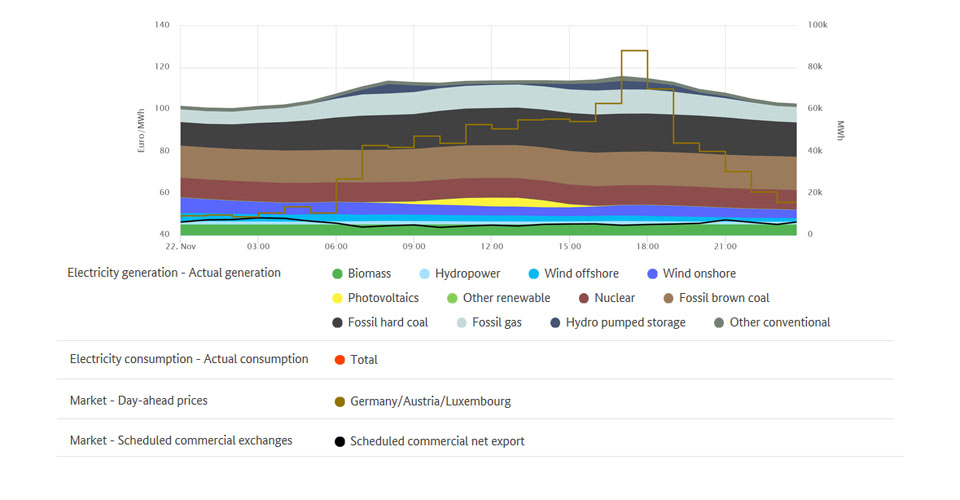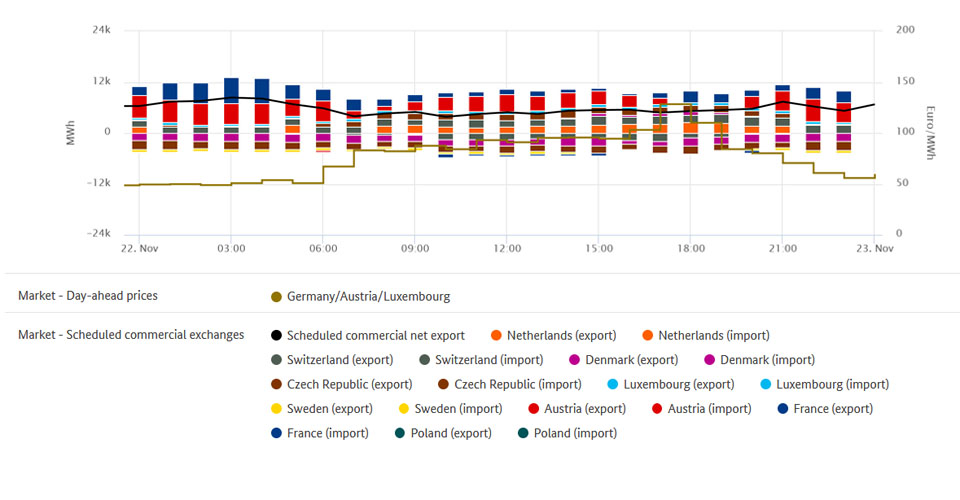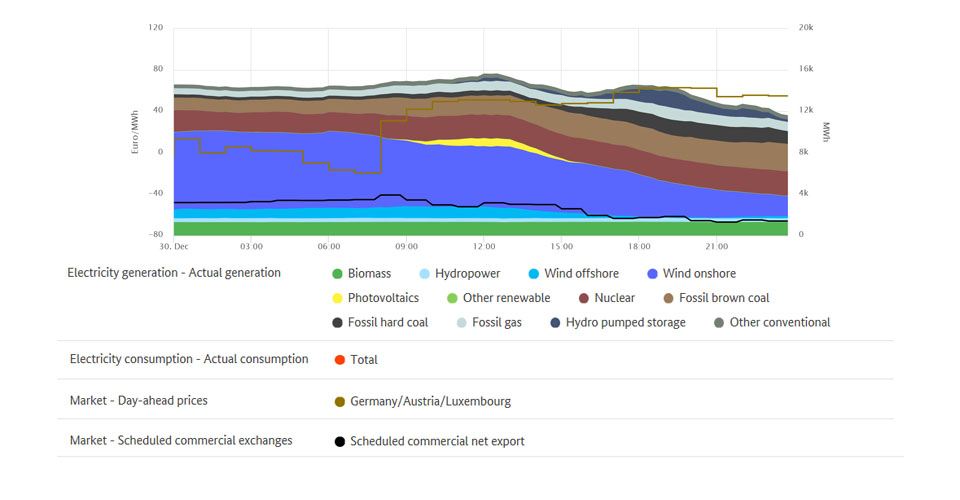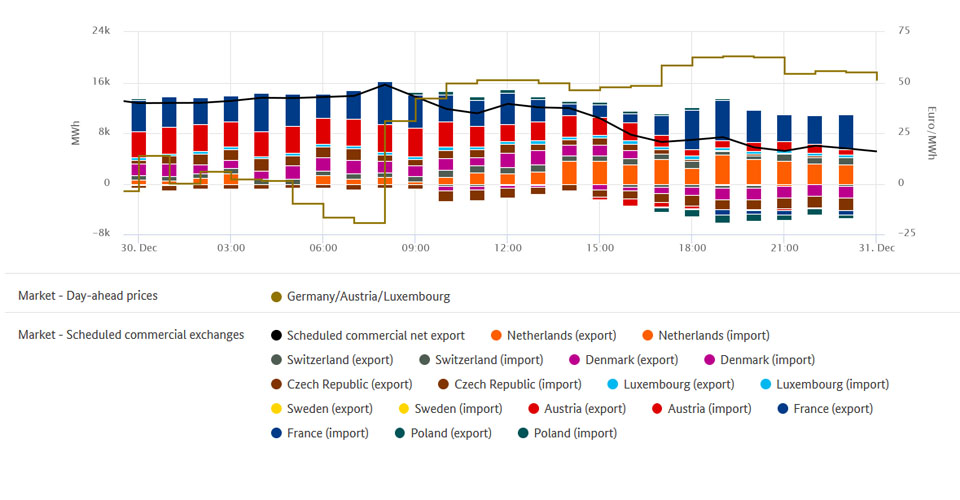Hint: This website is not optimized for your browser version.
Electricity trade in November and December 2018
15 January 2019 – In November and December 2018, Germany again exported more electricity than it imported, but net exports were 12.7% down year-on-year. The largest importers of electricity produced in Germany were Austria, France and the Netherlands. The wholesale price of electricity averaged €52.33/MWh, which is significantly higher than the average price in the same period of the previous year.text steht 2018
In November and December 2018, Germany's commercial net exports amounted to 11.2 TWh. This is equivalent to 12% of the electricity generated in Germany during that period. In comparison with the previous year, net exports fell by 12.7%. The main customer for Germany's net exports (exports less imports) was Austria, which accounted for 4700 GWh (down 18% compared with the previous year). France followed in second place with 2751 GWh (down 46%), ahead of the Netherlands with 2341 GWh (up 73%).
The marked decline in exports to France is due to the change in price differences. While in Germany, prices in November and December were significantly higher year-on-year, in France average wholesale prices were largely unchanged compared with the same period of the preceding year. This reduced the price gap between the two countries. In November and December 2017, the average wholesale price in France was €24 higher than the price in Germany, but in the last two months of 2018 it was barely €9 higher. It was more often the case that prices in France were the same as those in Germany or even lower than them. There were, therefore, fewer hours during the two-month period when exporting to France was worthwhile..
By contrast, Germany was a net importer from Denmark (674 GWh), Sweden (287 GWh) and Poland (9 GWh). Net imports from these countries amounted to 970 GWh. Total electricity imports were 44% down on the previous year. In November and December 2017, Germany was a net importer of electricity from Czechia, but in the same two months of 2018 Germany exported about 117 GWh of electricity to its neighbour.
The chart gives an overview of Germany's commercial electricity trade. (Gross) exports are shown above the zero line while (gross) imports are shown below the zero line.
The wholesale price in Germany
Wholesale prices for electricity were significantly higher compared with a year earlier. In November and December the hourly products on the EPEX Spot day-ahead market were traded at between -19.43 euros and 128.26 euros per megawatt hour (€/MWh), resulting in an average price of €52.33/MWh. That was €16.90/MWh higher than in the same period of the previous year.
On the day-ahead market exchange, the highest price of the past two months of €128.26/MWh was recorded on Thursday, 22 November, between 5pm and 6pm. During that hour, weekday demand coincided with reduced generation from renewable energy sources. Moreover, some prices abroad were well above German ones, so some electricity was exported (net 4.8 GWh). Both these factors pushed up prices in Germany.
The lowest electricity price of €19.43/MWh was recorded between 7am and 8am on Sunday, 30 December, when Germany exported a very large amount of electricity) to other countries. Net exports amounted to 13 GWh. On that Sunday morning, electricity consumption was low and a relatively large amount of electricity was generated by wind turbines. Wind energy alone was able to meet 77% of total demand at that time.



